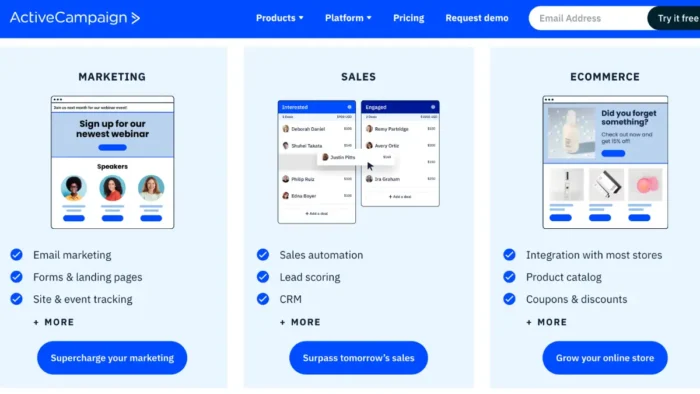Building an engaging website and amassing many followers aren’t enough for a successful digital marketing campaign. Each channel needs a marketing plan to attract your target audience and improve your sales funnel efficiency.
Getting people to click on your content is only half the battle; you also need to keep them interested after they do. To help you with that, here’s a guide for digital optimization, covering the steps necessary to understand and implement a comprehensive strategy across all digital platforms.
1. Build Your Media Plan
A media plan is a data-driven document that details the who, when, where, and what in relation to the advertisements to be distributed. The strategy also includes well-defined objectives and strict financial limits.
Having a well-thought-out media plan can help you organize your media campaign from start to finish, prepare for roadblocks and bottlenecks, and identify key performance indicators (KPIs).
Throughout your ad campaign, the media planner is responsible for the initial media purchase and the ongoing performance optimization. They need to consider the advertised service or product, the campaign’s intended demographic, and overall objectives.
Often, businesses hire an advertising agency to handle media planning because of their expertise in getting ads in front of the right people through the most effective mediums.
2. Use Multiple Marketing Channels
Nowadays, consumers may engage with their favorite brands on a wide variety of digital channels. This means they could begin their journey on one platform, switch to another, and then complete it on a third.
To maximize your chances of making a sale, you should develop a multi-channel strategy.
Multi-channel marketing refers to promoting a product or service across different distribution channels. Before the rise of the internet, marketing options were limited to television, radio, print media, mailings, and the telephone. Today, online marketing channels outnumber offline channels. So, it’s better to focus on multiple digital marketing channels.
3. Automate Your Ad Campaign
After establishing and refining your advertising strategy, you can determine which parts can be automated. Thanks to automation, your team will be more reliable and responsive, and they’ll have more time to close deals.
You can use automation to:
- Nurture Your Leads. Automating lead nurturing tasks may include sending follow-up emails and forwarding relevant information to the user based on their stage in the buyer journey.A fully automated lead nurturing strategy can be done with careful planning of your marketing process and some innovative thinking. You need to use a program to determine when a prospect should get a message and what that message should include. These need to be tailored to each potential customer.
- Streamline Your Sales Force. You want to improve the closing rate of everyone on your team, not just the one who got the proper lead. If you want a more productive and efficient sales force, automating tasks can help you save time, eliminate errors, and increase brand recognition.
A well-designed marketing automation procedure can improve profitability, worker contentment, and client retention.

4. Analyze Data
In digital marketing, data is the starting and ending point. When used effectively, data analytics can drive growth and have a beneficial effect on financial outcomes.
With data, your marketing team can improve their campaign messaging, allocate more resources to the most productive channels, and optimize their efforts for peak performance. In a nutshell, it can help marketers increase their efficiency.
Customers interact with your brand in a variety of ways. This enables you to collect and analyze data, from website traffic and customer reviews to customer relationship management (CRM) insights and sales team feedback. You can use this information to draw conclusions and create a strategy to increase customer engagement and loyalty.
The data speaks for itself. All you have to do is tune in and adjust your strategy to achieve your company goals.
5. Run An A/B Test
Some marketing initiatives, despite your best efforts, just won’t succeed. It would help to use excellent tools to determine the most effective forms of online advertising for your business.
A/B testing, also known as split testing, is a method for determining which of two versions of an advertisement is more effective at achieving a specified goal. The font color, headlines, pop-ups, and featured videos are just a few elements that can be tested in an advertising campaign to discover which one leads to the desired action, such as making a purchase or signing up for your newsletter.
Regularly testing your digital ads can keep your campaigns relevant even when consumer behavior and preferences change. You may improve your conversion rate and your return on investment by doing digital advertising testing.
Conclusion
A comprehensive digital ad campaign involves several moving parts. Consider how you may increase brand engagement through various digital platforms by utilizing both new and existing content. A well-rounded digital marketing strategy will use the appropriate methods to ensure your content is seen by the right people at the right time.





